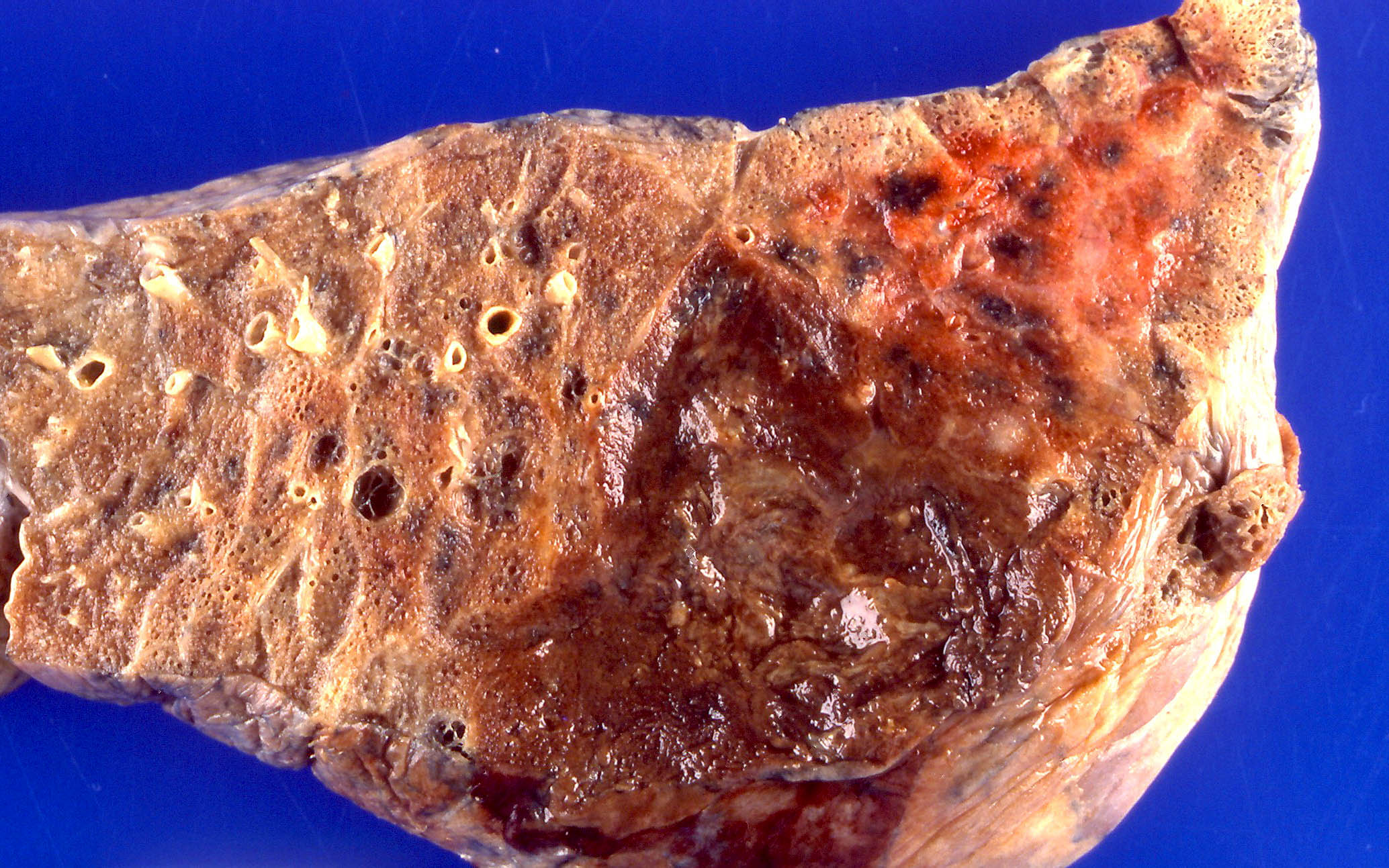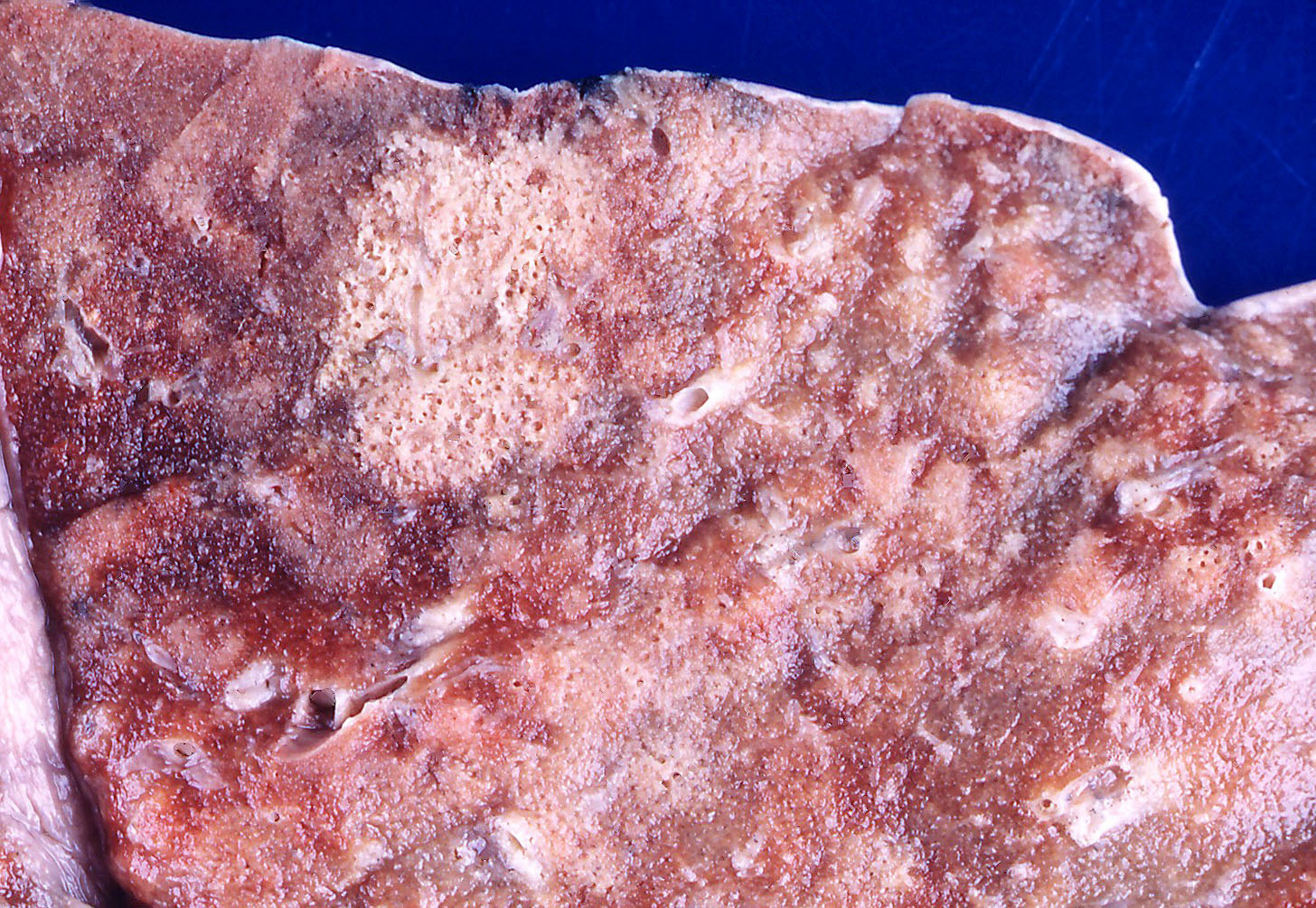Table of Contents
Clinical features | Case reports | Gross images | Microscopic (histologic) description | Additional referencesCite this page: Weisenberg E. Pseudomonas. PathologyOutlines.com website. https://www.pathologyoutlines.com/topic/lungnontumorpseudomonas.html. Accessed April 25th, 2024.
Clinical features
- Aerobic, mobile, flagellated Gram negative bacillus that survives in water, soil and vegetation
- Worldwide distribution (eMedicine)
- Resistant to many disinfectants, common in hospital environment, common cause of hospital acquired infections
- Commonly colonizes humans, but rarely causes disease in healthy subjects
- Affects primarily infants, cystic fibrosis, immunocompromise, critically ill, neutropenia and burns / on ventilators
- Immunocompromised usually have paucicellular pattern, rapidly progressive course with bronchopneumonia and bacteremia
- Immunocompetent have a cellular pneumonia, more protracted course
- Perivascular bacterial infiltration is somewhat specific for pseudomonas
Infants:
- Rare: 0.3% of neonatal ICU admissions
- Usually low birth weight (1.2% of low birth weight admissions)
- Mortality 32% - 87% with death within 1 - 2 days
- Diagnosis made by culture
Case reports
- 49 year old woman with fatal pneumonia likely associated with contaminated hot tub (Infection 2011;39:265)
Microscopic (histologic) description
- Necrotizing pneumonia with 2 patterns: paucicellular coagulative confluent bronchopneumonia with perivascular bacillary infiltration (bacteremic) or cellular pneumonia without evidence of perivascular organisms (nonbactermic)
- Nonbacteremic: often occurs in debilitated patients with chronic lung or heart disease through aspiration
Additional references






